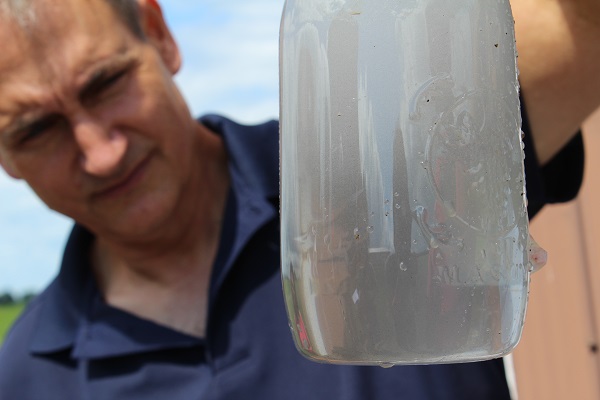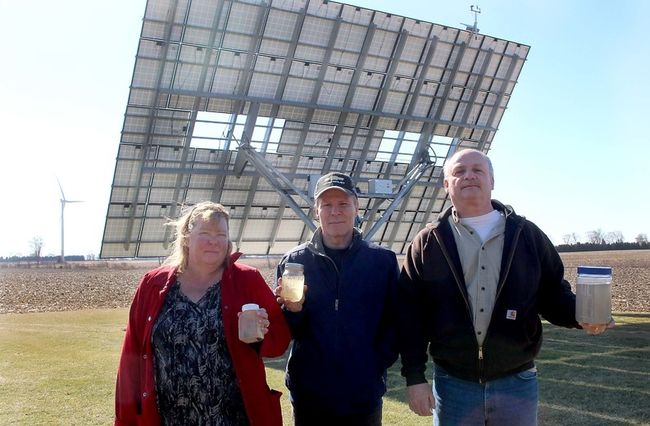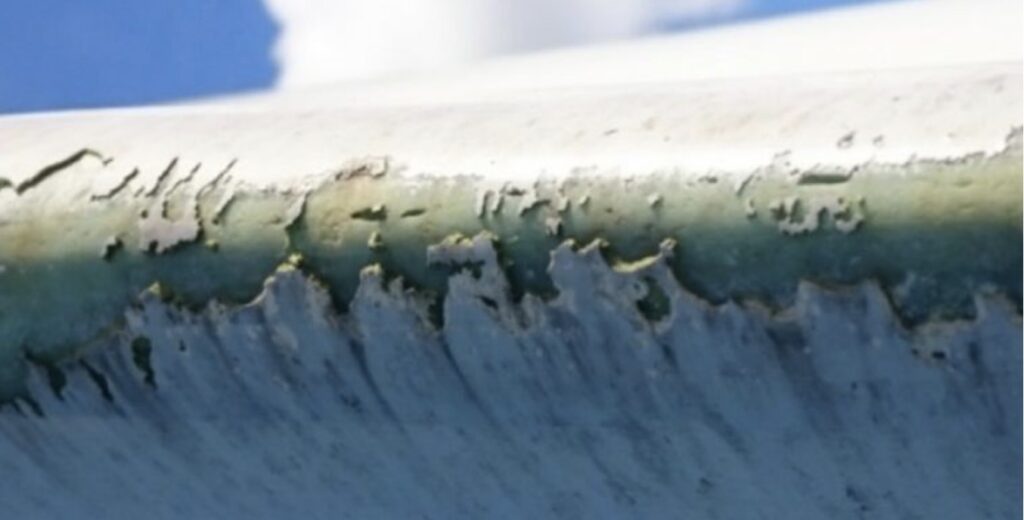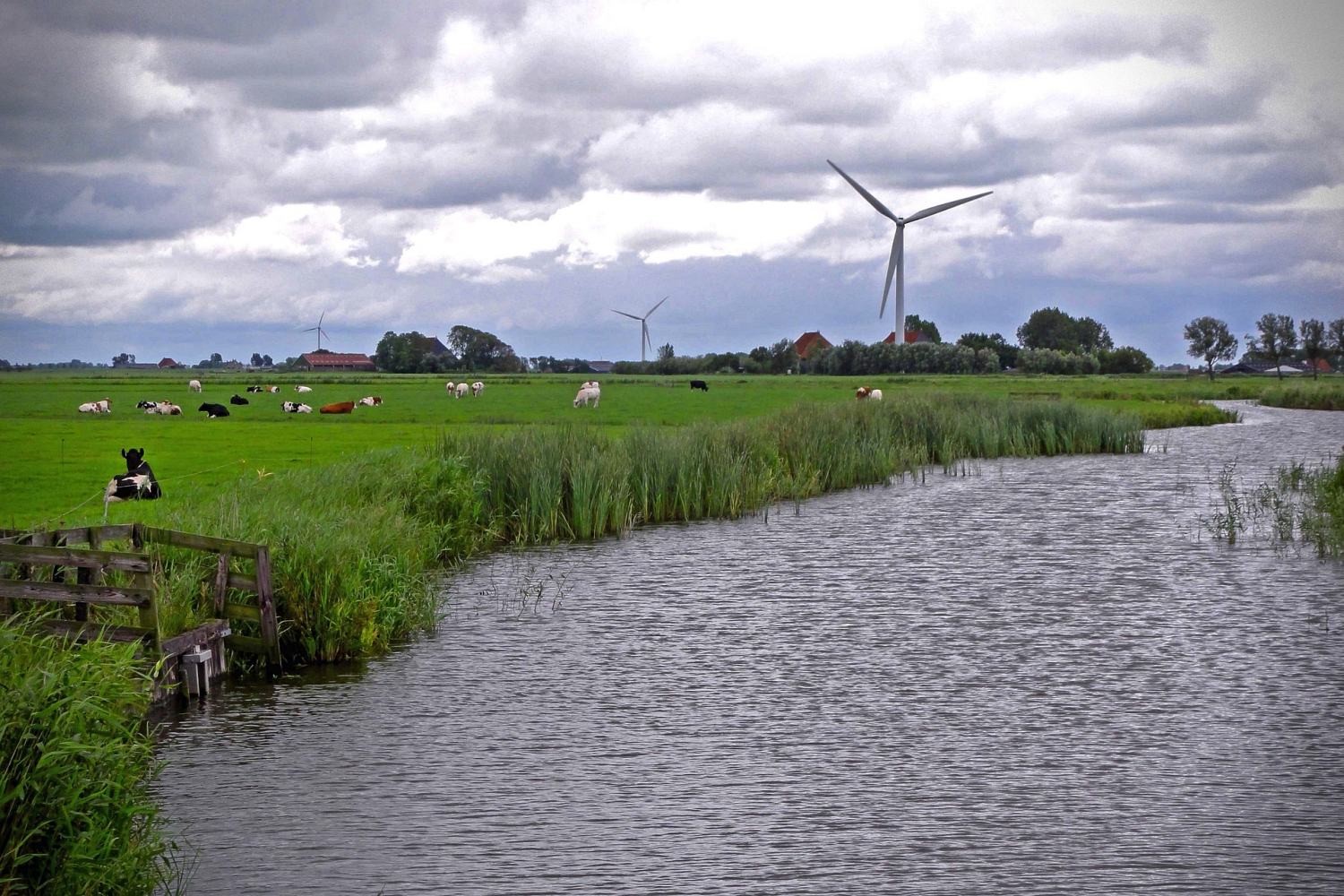The more we research the impacts of industrial wind turbines, the more concrete our position that this form of “renewable energy” ought to be outright banned if not criminalized. Whether it is harm to human health, animal health, large migratory birds, bats, earthworms, whales, soil, provincial or state economies, property values and pristine views, the damage is lasting and at times catastrophic. And that includes our sources of water…
Another Chapter in Ontario’s Wind Horrors
In the Chatham-Kent area of southwestern Ontario, over 20 residents began reporting water contamination shortly after the massive piles for new wind turbines were being driven some 50-70′ into the ground.
They cite stunning visual evidence of contamination, water from wells literally black with suspended particles and, in two instances, plumbing systems clogged with particulates to the point that they need to be replaced.
Jeffrey Carter, Ontario Farmer, February 20, 2018; republished: “Water Wars: Wind Turbine Construction Destroying Underground Water Supplies in Ontario”; stopthesethings.com
The cause, said University of Waterloo Professor and geological engineer Dr. Maurice Dusseault, was likely due to extremely low vibrations.
Pile driving emits a lot of low-frequency energy, and it is not at all surprising to me that there could be related groundwater effects. The concept of large-amplitude, low frequency excitation as an aid to liquid flow is reasonably well-known.
Dr. Maurice Dusseault, PhD, ibid.

However, Ontario’s Ministry of the Environment and Climate Change (MOECC) concluded after their investigation that the contamination was not due to the vibrations that were measured but rather “unidentified factors.” The firm Golder Associates Limited measured changes to particle velocity as a measure of vibration intensity created by pile driving.
But Dr. Dusseault said that this test likely failed to measure vibrations below one hertz. Pile driving emits the same type of low frequency vibrations created by distant earthquakes — a phenomenon known to affect groundwater wells. “Earthquakes, even [distant] ones, are known to affect groundwater wells, altering the levels of the water, perhaps generating turbidity,” said Dusseault who has co-authored two textbooks, over 470 conference and journal articles, and works with industry as an advisor and instructor. “It is clear there are substantial effects from distant earthquakes, even though the peak particle velocity locally is essentially zero, as measured the way they [Golder] do.”

Furthermore, other residents claimed that, once the turbines began operating, the infrasonic frequencies they generate almost immediately stirred contaminants that showed up in their water wells. “We knew whoever was close was going to get the shale particles right away and once they started vibrating the whole aquifer we knew we were going to get it,” said resident Jim Leveille.1
Rick Goetheyn is also among property owners not affected from the pile driving, but who saw their wells go bad after the turbines began operating. His water went from cloudy in the morning to black by supper time.
Charges were eventually laid against the environment ministry and three energy companies, but were later dropped as the court sided with the MOECC.
Ground Contamination
In Scotland, residents there began reporting bouts of vomiting and diarrhea after wind turbines went up, though the causes could be numerous — from surface contamination to vibrations.

Times photographer Paul Rogers
Dr. Rachel Connor found that, for three years, high readings of E.coli and other coliform bacteria had been recorded2 and also the chemical trihalomethane (THM), linked to various cancers, still births and miscarriages, were way beyond safe limits.3
“We are drinking the stuff now but all the medical advice is that the effects may not be seen for 10 or 20 years,” she warned, adding, “I would expect this likely contamination of drinking water must be happening all over Scotland. If there is not an actual cover-up, then there is probably complacency to the point of negligence by developers and statutory authorities.”4
This should serve as a wake-up call that wind energy is not as clean and green as is being suggested.
Murdo Fraser MSP, convener of Holyrood’s Economy, Energy and Tourism Committee, March 23, 2014, The Sunday Post
In Brazil, a 2019 study found a “moderate to high natural vulnerability of the aquifer to pollution in the areas close to the wind park.”5
Tom Morley, a member of the National Examination Board in Occupational Safety and Health warned that a proposed wind farm in Cork, Ireland would have “catastrophic” consequences on public water supplies, particularly during development. The project, he warned, would involve “excavating hundreds of thousands of tons of rock and soil”. He believed the excavations could equate to 40 tons of high tensile reinforcement steel per turbine base, plus over 25,000 tonnes of concrete in total. Over 18,000 tonnes also stand to be extracted for substations and roads. He said the stockpiled residue would infiltrate underground and overground streams from where water is pumped.
It is a foregone conclusion, he said, that Youghal’s water “will be contaminated, undrinkable, discoloured, silty, and muddy”.
September 14, 2018, Irish Examiner
Unfortunately for Newfoundlanders of the Mi’kmaw community, they say multi-billion dollar energy corporation World Energy GH2, which is developing a major wind farm there, is contaminating their water due to “extensive road construction” near their water supply. They have set up blockades in attempt to stop the company from doing any further damage.

Newfoundland/Labrador
We’re gonna have to leave our home. We can’t live here. It’s gonna kill all the lobster eggs, everything. It’s gonna kill and poison us. And it’s going to poison the ocean and the land.
Amanda Cornect, January 23, 2023, Ricochet
Even offshore, a study has found that, the closer to the wind turbine, the more heavy metal contaminants appear, potentially jeopardizing microrganisms and sediment quality.6
Poisonous Blades
Finally, many groups opposed to wind turbine “farms” have warned about the dangers of contamination by the turbine blades themselves.
Microplastic shedding from turbine blades, known as Leading Edge Erosion, is a great concern to manufacturers who are forced to repair the damage that occurs after only a couple of years. The particles eroded from blades include epoxy which is 40% Bisphenol-A (BPA), a frequently banned endocrine disruptor and neurotoxin. Academic research has shown the potential for 137 pounds of epoxy microparticles to be shed per turbine per year.
Mark Twichell, Citizens Against Wind Turbines In Lake Erie, March 21, 2023, The Buffalo News
According to the Swedish Environmental Health Agency, “Bisphenol A is the most toxic substance we know.”7 Quite small concentrations of Bisphenol A damages the fertility of humans and all organisms,8which raises serious concerns for nearby residents, livestock, birds, and other wildlife near turbines, and closeby waterways. According to the authors of the Norwegian paper “Leading Edge erosion and pollution from wind turbine blades,” turbine blades “will be able to spread the problem over relatively large areas such as outfields and pastures.”9

From turbines only 130-140m high (the Northern Valley turbines will be 200m), they estimate an annual emission of microplastics of approx. 62 kg (137lbs) per turbine would be released from the blades. And this amount increases exponentially with turbine height, speed, and harsher weather conditions (such as Canada’s climate).
1 kg of BPA is enough to pollute 10 billion litres of water. That’s 10,000,000,000 litres. Since 2017, the WHO has advised that drinking water should have a maximum of 0.1 micrograms of BPA per litre. That is the same as 0.0000001 grams per litre of water.
Asbjørn Solberg, Bård-Einar Rimereit and Jan Erik Weinbach, 08/07/2021, “Leading Edge erosion and pollution from wind turbine blades,” p. 15
Twichell notes that attempts to minimize the shedding depends on specialized blade coatings that also contain toxic ingredients from the PFAS family of “forever” chemicals which are biologically cumulative and non-degradable. These coatings likewise need replacement after a few years. PFAS is also a common ingredient in lubricants and hydraulic fluids which routinely leak from wind turbines.10
With wind energy costs beginning to soar, quality control diving, and energy corporations beginning to bail, we can only hope that this horrible experiment on human, animal, and ecological health will come crashing down with them.
Watch
- Chatham Daily News, February 27, 2018[↩]
- cf. Times, September 21, 2013[↩]
- laplumauvent.com[↩]
- laplumauvent.com; cf. March 23, 2014, The Sunday Post[↩]
- cf. scielo.br[↩]
- Sept, 2015, pubmed.ncbi.nlm.nih.gov[↩]
- docs.wind-watch.org/Bisphenol-A-Pollution-Wind-Turbines.pdf[↩]
- bergensia.com[↩]
- p. 8[↩]
- cf. The Buffalo News[↩]
Mark Mallett is a former award-winning reporter with CTV Edmonton and an independent researcher and author. His family homesteaded between Vermilion and Cold Lake, Alberta, and now resides in the Lakeland region. Mark is Editor in Chief of Wind Concerns.


